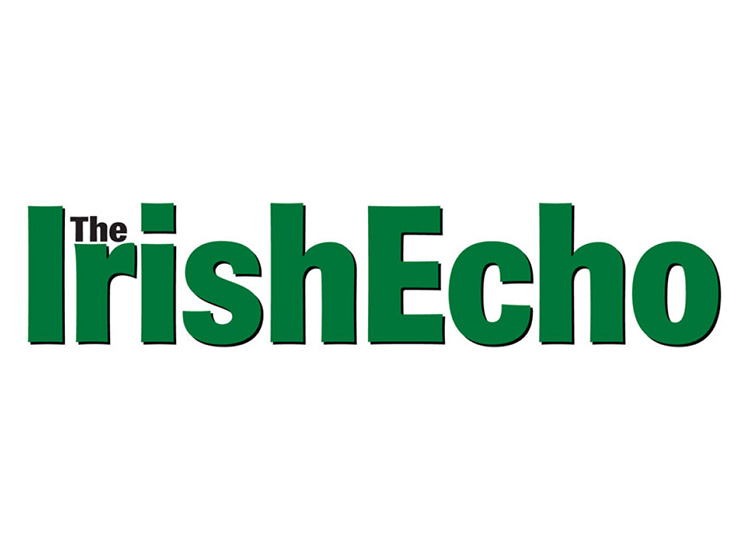ThoorBallylee_Cuirt2015 12 ThoorBallylee_Cuirt2015 1 ThoorBallylee_Cuirt2015 2 ThoorBallylee_Cuirt2015 3 Yeats1923




BALLYLEE PHOTOS BY DEIRDRE HOLMES
By Peter McDermott
pmcdermott@irishecho.com
A generous check from an American lawyer has boosted the cause of W.B. Yeats’s County Galway home ahead of today’s 150th anniversary celebrations.
But supporters locally and in the U.S. believe this is just one step in making the former summer retreat, the tower at Ballylee, into what they call a “world-class Yeats cultural center.”
Joseph Hassett, a graduate of Harvard Law School and the author of “W.B. Yeats and the Muses,” gave €31,000 to the Yeats Thoor Ballylee Society. The Buffalo, N.Y.-born, Washington-based Hassett first visited the Yeats Summer School in 1963 and subsequently obtained a PhD from University College Dublin.
Senator Fidelma Healy Eames, chairperson of the society, reported that his gift has been quickly followed by a successful fundraising auction and a second welcome check from another Yeats expert.
The senator recently gave an awestruck Dublin-based academic a tour of the property at Ballylee. “She told me ‘I can’t believe I’m on the winding stair,’ Healy Eames recalled.
The woman -- who was referring to the tower feature that gave its name to Yeats’s 1929 collection of poetry -- last week sent the society a check for €5,000.
The society leased the property from Fáilte Ireland, which had repaired 2009 flood damage. Prior to that, from 1965, Thoor Ballylee had housed a Yeats museum.
The new project has enlisted some high-profile supporters. One of them, Minister for State for Diaspora Affairs Jimmy Deenihan, believes that the building near Gort could serve both as an attraction for the general visitor and as a major center for Yeats studies.
“It has extraordinary untapped potential,” he told the Echo on Thursday.
“The bulk of the money will come from Ireland and that’s only right,” Deenihan said. “But people in the United States will want to have the opportunity to be associated with it.”
To that end, he said, Janet Moran-Hamill in New York and Chicago activist Billy Lawless, a Galway native, are organizing fundraisers in coming months.
Two years ago, Deenihan suggested that his then Fine Gael party colleague Healy Eames lead the local effort.
“Politicians don’t usually get involved in committees not in their own constituency,” said Healy Eames, who now sits as an independent in the Seanad. “But this is a labor of love.”
The Yeats Thoor Ballylee Society has put a price tag of €1 million on its dream of a cultural center, but the immediate aim is to have the doors open to the public from 11 a.m. through 6 p.m. each day, at least until September.
Meanwhile, said Senator Healy Eames, the society was due to celebrate the “big occasion” of the 150th today with a party at Thoor Ballylee.
A first home
“He had long been struck by the stark beauty of a medieval tower-house or castle keep buried in a little river-valley near Coole, and had written about it in ‘The Celtic Twilight,’” says R.F. Foster in his second volume of “W.B. Yeats: A Life.”
During the First World War, an opportunity came up to buy it from the Congested Districts Board. It wasn’t a seller’s market during the war, but nor was it a good time for Yeats to buy, because of his relatively straitened circumstances and also his worries about his father’s finances in New York.
Yeats, who had reached 50, had never bought a home before and confessed that Ballylee was the cause of many a sleepless night.
“Lady Gregory helped him with it, I believe,” said Andy McGowan of the Yeats Society of New York.
Long a regular at Gregory’s place at nearby Coole, the poet had no intention of ever staying at the tower alone.
“Ballylee is a good home for a child to grow up in – a place full of history & romance with plenty to do everyday,” he wrote.
He married Georgie Hyde-Lees in 1917; he was 52, she 25. They had two children, Anne, born in 1919, and Michael, who arrived in 1921. The marriage was a successful one and endured until his death in 1939, but the tower had been abandoned 10 years earlier as he began to spend more time abroad.
Still, it has close associations with his family life through the 1920s and his time in public life. He was appointed to the new Senate in December 1922, and shortly afterwards was awarded the Nobel Prize for Literature, which he saw as honoring Ireland’s entry into the community of nations.
Yeats and his wife poured their energies and finances into the property they rechristened Thoor Ballylee.
Foster said that it was likely built in the 1500s but with roots back to the 1300s, which Yeats preferred to stress because of the obvious Norman connections.
By early 1922, a bedroom was ready, as was the 3rd-floor study for the poet, though the children and servants slept in the old cottages beside the tower.
Floods were always a threat, and furniture and curtains were removed in the wintertime. Says Foster: “The permanent damp seeping through limestone wall also forbade pictures, prints, or photographs of any kind.”
Oil-lamps and storm-lanterns were used, while river-water was heated in a large copper.
“It was all extremely simple, not to say uncomfortably austere,” the biographer adds.
Today, the property is of interest, said Minister of State Deenihan, because it is “associated with major works by the greatest English-language poet of the 20th century.”
“The Winding Stair” was preceded in 1928 by “The Tower,” which Deenihan said was mostly completed during his time at Ballylee.
That volume contains, for example, “Sailing to Byzantium,” “Among School Children” and “Meditations in a Time of Civil War,” which refers to a conflict that had threatened to engulf both Thoor Ballylee and Coole.
Healy Eames, whose PhD thesis on creative writing dealt with the impact a place has on literary work, said: “I can see how Thoor Ballylee was an inspiration.”
Once, at the end of a very tough political day, the senator drove the 30 minutes from her home at Oranmore, Co. Galway, to Ballylee. After a few minutes there, Healy Eames said, “my mood was transformed.”
Tax deductible donations can be made, through the Ireland Funds, at yeatsthoorballylee.org/donate. In New York, Janet Moran-Hamill can be contacted at 718-374-1611 or yeats150jmoran@gmail.com.









